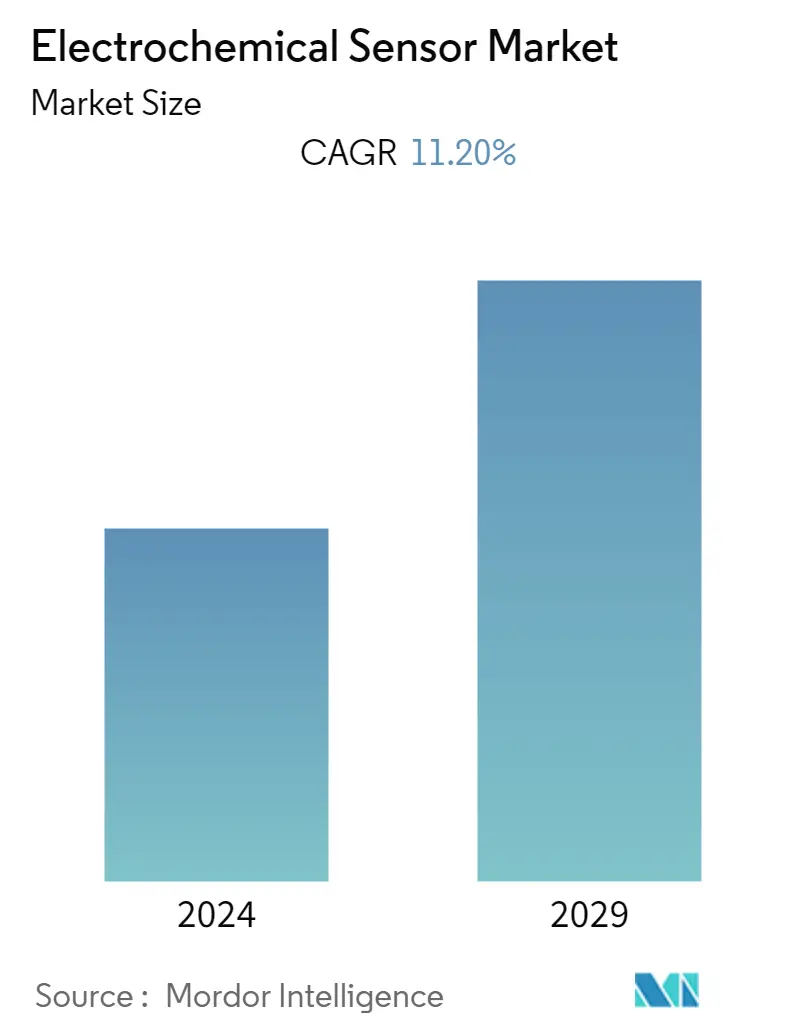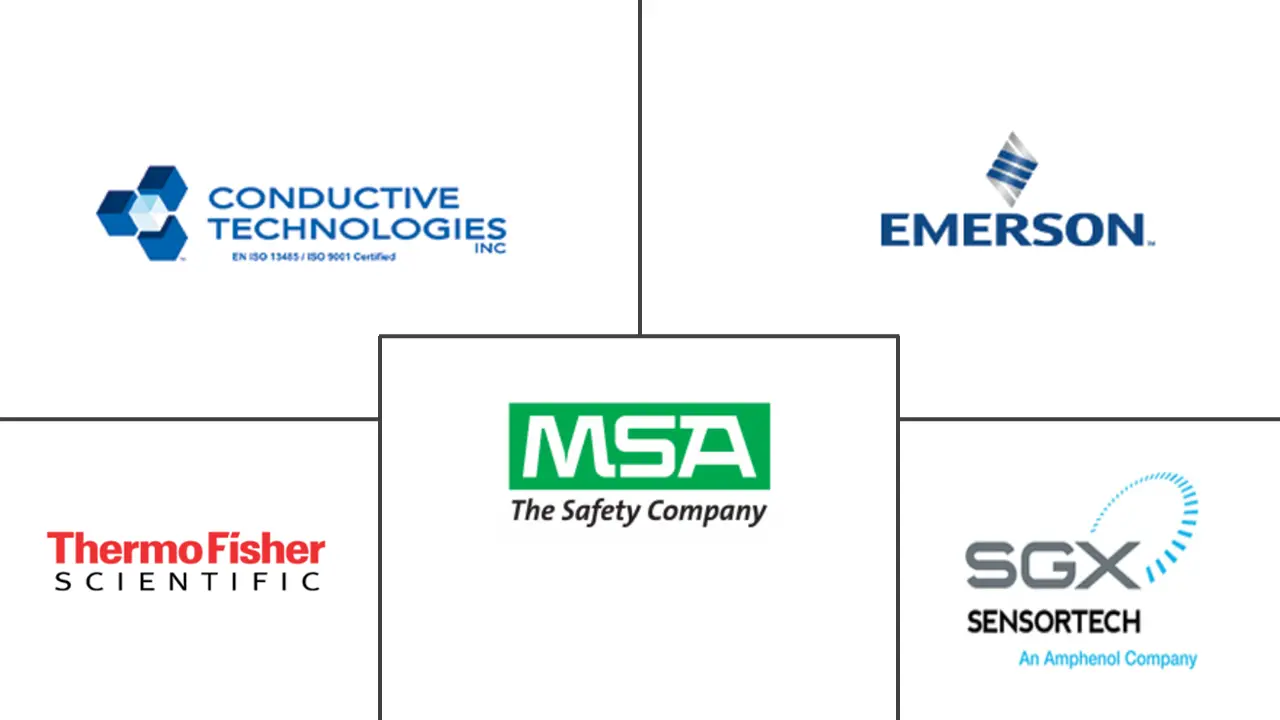Market Size of Electrochemical Sensor Industry

| Study Period | 2019 - 2029 |
| Base Year For Estimation | 2023 |
| CAGR | 11.20 % |
| Fastest Growing Market | Asia Pacific |
| Largest Market | North America |
| Market Concentration | Low |
Major Players
*Disclaimer: Major Players sorted in no particular order |
Need a report that reflects how COVID-19 has impacted this market and its growth?
Electrochemical Sensor Market Analysis
The Global Electrochemical Sensor Market is expected to register a CAGR of 11.2% during the forecast period. The market has been buoyed by the advent of MEMS technology, miniaturization of gas detection circuitry, and the development of solid-state sensors that have increased the popularity of sensor modules to detect gases.
- Increasing focus on the safety of hazardous locations due to the rise in the number of explosions occurring in the extreme environment of the manufacturing and chemical industries because of the presence of toxic and combustible gases has prompted an increased focus on explosion prevention through implicit monitoring across the hazardous zones of these end-user industries to achieve a safer working environment.
- The automotive sector has witnessed favorable gains, primarily driven by emerging applications such as cabin air quality and fuel emission detectors. Aligning trends such as improving fuel efficiency and air quality control has been a significant driver for the electrochemical-based gas sensor market.
- Furthermore, government regulations, such as COSHH and OSHA regulations, toward offshore oil and gas exploration and production, and storage activities, impose strict limits on the exposure to carbon monoxide and other toxic gases fumes. This has been a significant driver for the adoption of electrochemical technology-based gas sensors.
- Medical and diagnostics are lucrative market segments driven by a strong interest in fast point-of-care testing and monitoring devices. Furthermore, the integration of bio-sensors into multiple diagnostic medical equipment is set to offer a plethora of opportunities for the market over the forecast period.
- Further, the vendors in the studied market are constantly innovating and offering new solutions. For instance, in July 2021, DropSens, a Metrohm company, unveiled new capabilities that will make mass production of customized electrochemical sensors easier. Custom sensors are made using a highly scalable and cost-effective manufacturing technique that has almost no quantity restrictions. From original concept to in-depth prototype design, Metrohm DropSens covers the whole development and manufacturing process.
- Moreover, in March 2021, for industrial safety applications, DD-Scientific introduced a new line of high-performance electrochemical gas sensors. The DceL suite of solutions not only provides industry-leading robustness and performance for dangerous gas and oxygen monitoring, but they also come in an ultra-compact design that allows for detector size reduction. Sensors for the most routinely measured hazardous species, such as hydrogen sulfide, carbon monoxide, nitrogen dioxide, ammonia, and Sulphur dioxide, are available in the DceL range.
- The outbreak of the COVID-19 pandemic caused by a novel severe acute respiratory syndrome coronavirus 2 (SARS-CoV-2) posed a threat to public health worldwide. Thus, the development of a rapid, accurate, and easy-to-implement diagnostic system for virus detection became crucial for controlling the infection sources and monitoring the illness progression.
- In June 2020, the Northeastern University College of Engineering Professor Nian Sun was awarded a USD 200,000 NSF RAPID grant for the COVID-19 new handheld gas sensor for Airborne SARS-CoV-2 Virus instant COVID-19 diagnosis from exhaled breath. In collaboration with Jeremy Luban from UMass Medical School, the project aims to streamline the COVID-19 detection and diagnosis process. Both professors developed a handheld gas sensor for the SARS-CoV-2 virus in air detection, using each of their fields of expertise.
